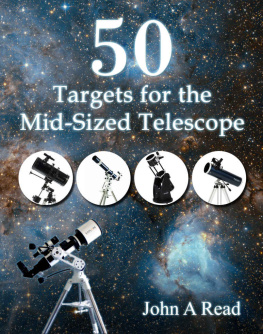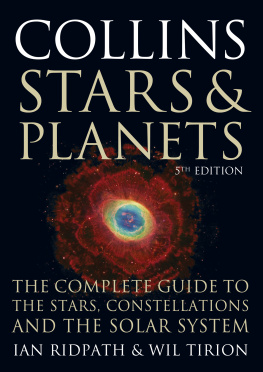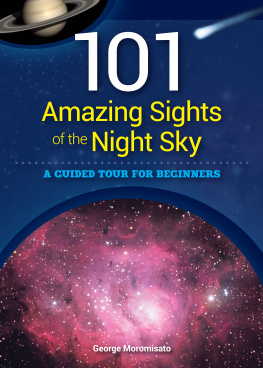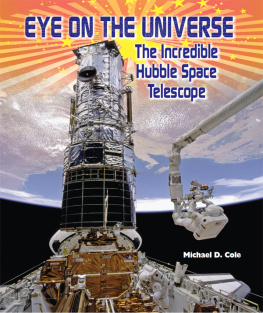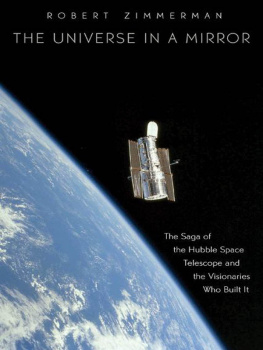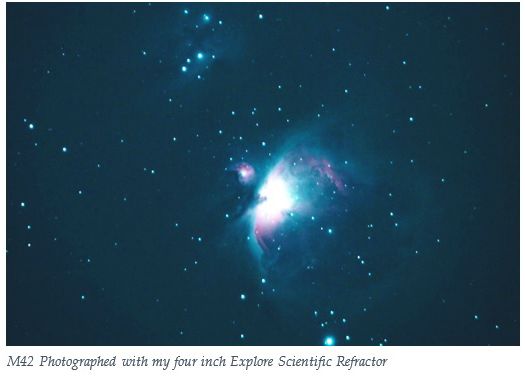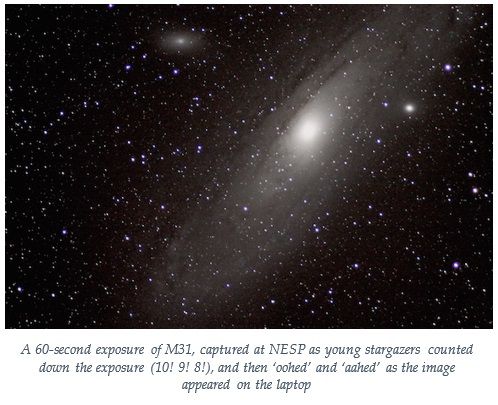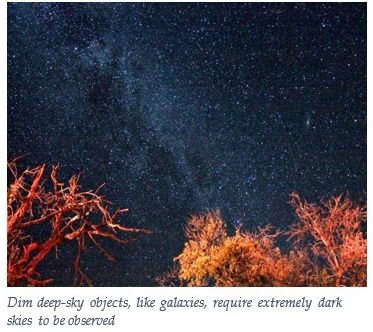Targets for the
Mid-Sized Telescope

John A. Read
www.facebook.com/50ThingstoSeewithaSmallTelescope
Text Copyright @ 2017 John A. Read
All Rights Reserved
Cover Image Hubble Peers into the Storm. Original image by ESA/Hubble. Mild color alternations (to improve text visibility) by Steven J. Catizone. The original image file can be found here: https://www.nasa.gov/sites/default/files/thumbnails/image/potw1636a.jpg
Cover images of the following telescopes provided compliments of Celestron and Sky-Watcher:
Celestron 127EQ PowerSeeker Telescope, Celestron Omni XLT 102, Sky-Watcher 8" Collapsible Dobsonian Telescope, Celestron Omni XLT AZ 130mm Newtonian
Cover image of the Explore Scientific AR102 refractor was taken by the author
Images of finders were provided with permission by the following:
Rigel Quikfinder: Permission compliments of Rigel Systems
High Point Multi-Reticle Red Dot Finder: Permission compliments of High Point Scientific
Telrad photo permission pending
Telescope view source files for deep-sky objects were constructed from actual photos taken by the author, either using his personal four-inch refractor, twelve inch Dobsonian and eight-inch Dobsonian, or using the following remote observatories: Abbey Ridge Observatory (owned by Dave Lane) and the Burke-Gaffney Observatory at Saint Marys University, Halifax. These images were then processed to simulate a visual observation, and then (in almost all cases) inverted to improve visibility when using this book in the dark.
Star maps used in this book were sourced using Stellarium, an open-source stargazing program. These maps were then customized using various software programs for the purpose of this book. Stellarium is the best astronomy software out there (and its free). A link to this software can be found here: http://stellarium.org
Images from NASA follow NASAs photo usage guidelines found here:
http://www.nasa.gov/audience/formedia/features/MP_Photo_Guidelines.html
The book is dedicated to Isaac and Oliver
__________________________________________
May you dream of the stars, and reach for the Moon
Note from the author
Written as a follow up to 50 Things to See with a Small Telescope , containing virtually no overlap in content, 50 Targets for the Mid-Sized Telescope introduces the beginner stargazer to a new assortment of astronomical wonders. With easy-to-follow star maps, that are unique for each target, the budding astronomer will explore the universe like never before.
Each target has been carefully chosen to be observable in telescopes with apertures between four and eight inches. Most objects can be viewed from the suburbs, in mildly light polluted conditions, with only a few noted exceptions that require darker skies. On dark, moonless nights, most targets will be visible in small telescopes, and binoculars, too.
Acknowledgements
Id like to thank of all the people directly involved in the production of this book. Dave Chapman, five-time editor of the Royal Astronomical Society of Canadas Observers Handbook , completed a major content edit (while vacationing in Costa Rica). Daves guidance significantly increased the usability of this guide. Dr. Luigi Gallo (my astrophysics professor at Saint Marys University) thoroughly reviewed the manuscript for scientific accuracy. Without his review, I may have accidently stated that stars rise in the west. Several early edits of this book were completed by my wonderful (and very patient) wife, Jennifer Read. Final cover design was completed by the very talented Steven J. Catizone (who created the covers for my science fiction series, too).
Id like to thank the Halifax Centre of the Royal Astronomical Society of Canada for hosting the 2016 Nova East Star Party. At this event, a third of the books images were captured while young stargazers watched in awe as the pictures appeared on my telescopes camera screen.
A huge thanks to Dave Lane from Saint Marys University. With the support of the University, Dave created the first (and second) Twitter-operated remote observatories. His personal observatory, Abbey Ridge, and the universitys Burke Gaffney Observatory, were used to make several of the telescope view images that make this book so handy.
Id also like to thank the Mount Diablo Astronomical Society, and the Carolina Skygazers. These two organizations nurtured my love for astronomy, leading me to leave Corporate America and pursue my passion for astrophysics in academia.
And special thanks to the NASA Night Sky Network, and the Astronomical Society of the Pacific, for enabling thousands of events and reaching millions of students around the world. If it werent for your network, this book would not have been possible.
Tips and Tricks
So, youve just set up your new mid-sized telescope, and its time to look at some stars! There are a few things youll want to consider before you can expect to see some of the dimmer targets, like galaxies, nebulae, and globular clusters.
The most important thing to do when attempting to observe the objects listed in this book is to adapt your eyes to the dark. It takes at least twenty minutes for your eyes to adjust for the purpose of viewing these deep-sky objects. Think of your eyes as a stopwatch: every time you look at a light, the twenty-minute clock resets.
If youre in the suburbs, make sure you ask your neighbors to turn off their porch lights. Dont look at your cell phone or a computer screen. These reset your eyes clock, too. Avoid flashlights at stargazing events. Red lights are usually okay, but should be used sparingly.
Dont even look at the Moon, or any bright stars, through your telescope before attempting to view a deep-sky object, such as a galaxy or nebula. There is only one exception to this rule. If your goal is to observe the Moon, or double stars, then you dont need to worry about adapting your eyes to the dark.
Have patience. Even with years of experience using a telescope, it still takes me several minutes, and sometimes longer, to find the deep-sky object Im looking for. Sometimes, factors like light pollution and Moon phase make it impossible to see the dimmer objects, and youll just have to try another night. This happens all the time in astronomy. Failed attempts are part of the hobby.
Try to set up your telescope on solid ground. Avoid setting it up on decks or wooden structures. On wood, the subtle movement of your body will translate into vibrations visible through your eyepiece.
The most effective way to become proficient in amateur astronomy is to get involved. Almost every city in North America has an astronomy club. Members are a wealth of knowledge in nearly every aspect of astronomy. And while attending club meetings you get to meet some amazing speakers. At our local club, we recently had David Levy speak. Levy was one of the people credited with discovering comet ShoemakerLevy 9, which crashed into Jupiter in 1994; an event witnessed by stargazers around the globe.

